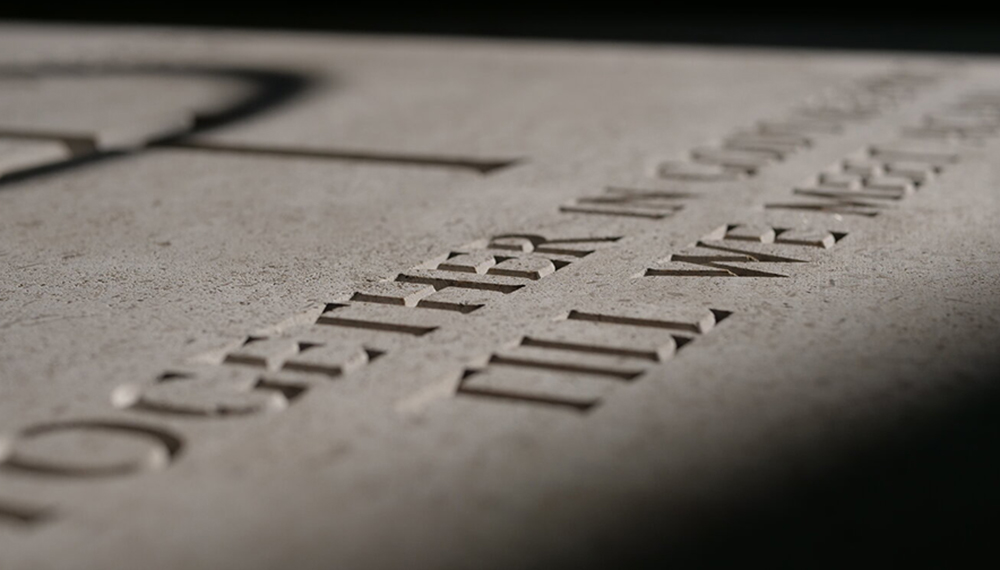17 January 2020
No Man Should Be Left Behind: Recovering soldiers on the Western Front
Simon Verdegem is a Belgian Archaeologist, who works closely with the CWGC. He tells the story of recovering the remains of soldiers on the Western Front and his involvement in DigHill80.

On 10 October 2019, 13 Commonwealth soldiers were buried at Wijtschate Military Cemetery in Belgium. Their mortal remains were recovered in 2018 during a large-scale excavation named DigHill80. A further 73 German soldiers, 3 French, 1 South African and 20 whose nationality remained unknown were also recovered.
The ceremonies in October, including the burial of the German soldiers on the 11th October in Langemark, were the culmination of the large-scale archaeological project which had been made possible with the financial support and commitment of an international community. The recovery and reburial of these 110 soldiers resulted in a renewed interest in locating the thousands of individuals missing in Flanders Fields.
Because of their large number, the fallen soldiers of DigHill80 attracted a high level of media attention. However, it is anything but exceptional that soldiers are found on the former battlefields around Ypres and the surrounding area. Every year dozens of soldiers are recovered during archaeological projects. That’s why Flemish archaeology is paying more and more attention to the modus operandi of such excavations.

The ultimate goal, of course, is the identification of each soldier, and the slightest detail can make the difference between success and failure. Closer cooperation with the various war graves commissions - the Commonwealth War Graves Commission in particular - should lead to a better transfer of excavation data and, hopefully, more identifications in the future.
Personally, the search for fallen soldiers is the most important part of my job. As a battlefield archaeologist, I am able to find missing soldiers, recover them and eventually return them to representatives of their nation of origin so that they can finally be laid to rest with dignity. It is a responsibility I have towards these soldiers who have been left behind in a foreign country and many of whose greatest fear was not to die but to go missing with no known grave.
There are several testimonies from soldiers, then and now, about this fear. And that is why I am convinced that they want to be found. That's why there's a certain relief every time we encounter mortal remains. Whatever the outcome of the investigation, the least we can offer that person is a dignified final resting place.
After the authorities have been informed of the find, the meticulous work begins. Extremely carefully, with an eye for detail and with respect for the subject, the remains, and associated artefacts are uncovered. Everything is measured, photographed and recorded three-dimensionally so that the researchers can subsequently find out how, where and with what the body was found.
 Once the necessary registrations have been made, everything is recovered and taken to the depot where both the bones and the objects are cleaned and examined. A physical anthropologist makes a detailed report of the remains and we examine the items in order to determine nationality, unit and, if possible, identity. In the majority of cases, direct identification based on the artefacts will not be possible. However, we always transfer the complete file in the knowledge that the specialised and experienced researchers of the CWGC and JCCC (Joint Casualty and Compassionate Centre) will do their utmost to arrive at an identification with the combination of our data and their archives.
Once the necessary registrations have been made, everything is recovered and taken to the depot where both the bones and the objects are cleaned and examined. A physical anthropologist makes a detailed report of the remains and we examine the items in order to determine nationality, unit and, if possible, identity. In the majority of cases, direct identification based on the artefacts will not be possible. However, we always transfer the complete file in the knowledge that the specialised and experienced researchers of the CWGC and JCCC (Joint Casualty and Compassionate Centre) will do their utmost to arrive at an identification with the combination of our data and their archives.
There’s always a big feeling of disappointment with a negative result, but when a positive result comes through it is indescribable. I will never forget the moment when a match was found for the initials "H J I W", which we could read on the back of the amulet of an officer of the Royal Warwickshires. Captain Henry John Innes Walker was a New Zealander who had joined the British Army. On 25 April 1915, he was killed in a disastrous counterattack.
According to eye-witnesses, he led his men fearlessly and was fatally hit when he jumped out of a bomb crater holding his Webley while shouting: "Come on lads". Afterwards I had the privilege to make contact with his relatives, visiting the place where he was killed and found together. The gratefulness of the family was enormous and will always be an incentive for me to continue my efforts. A lot of work still has to be done but no man should be left behind, so we will never stop.


